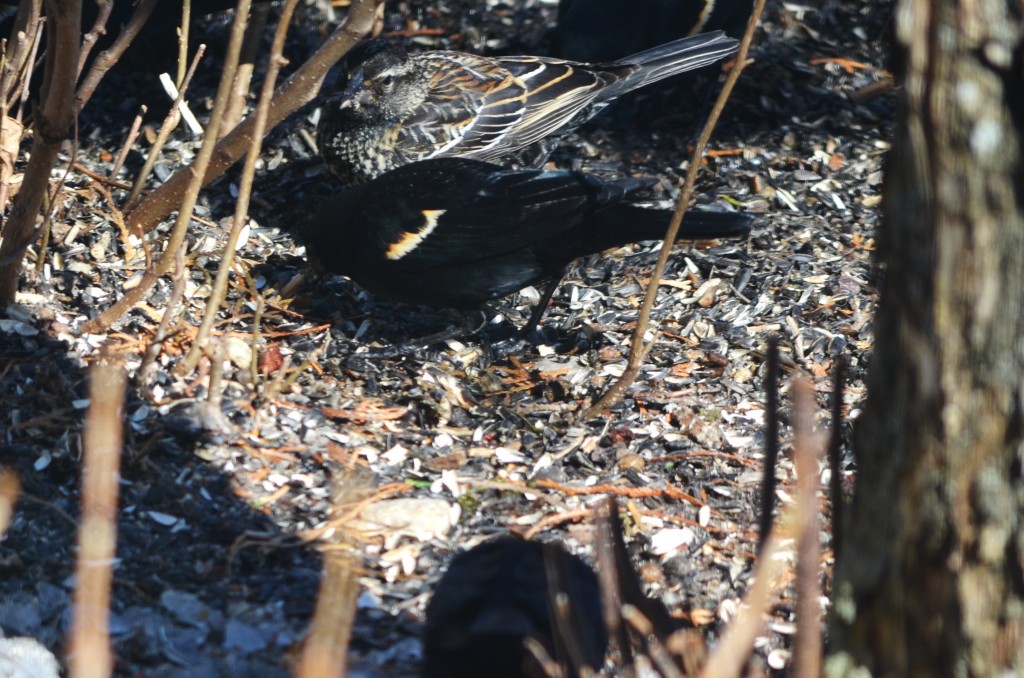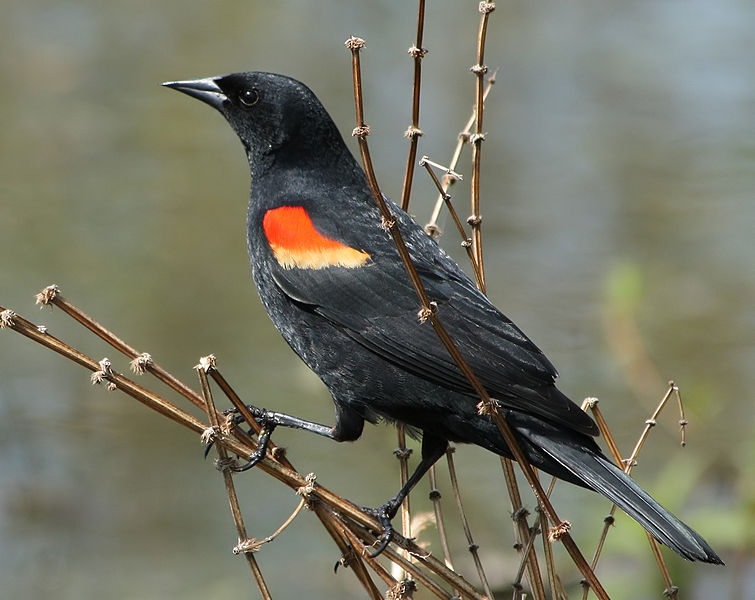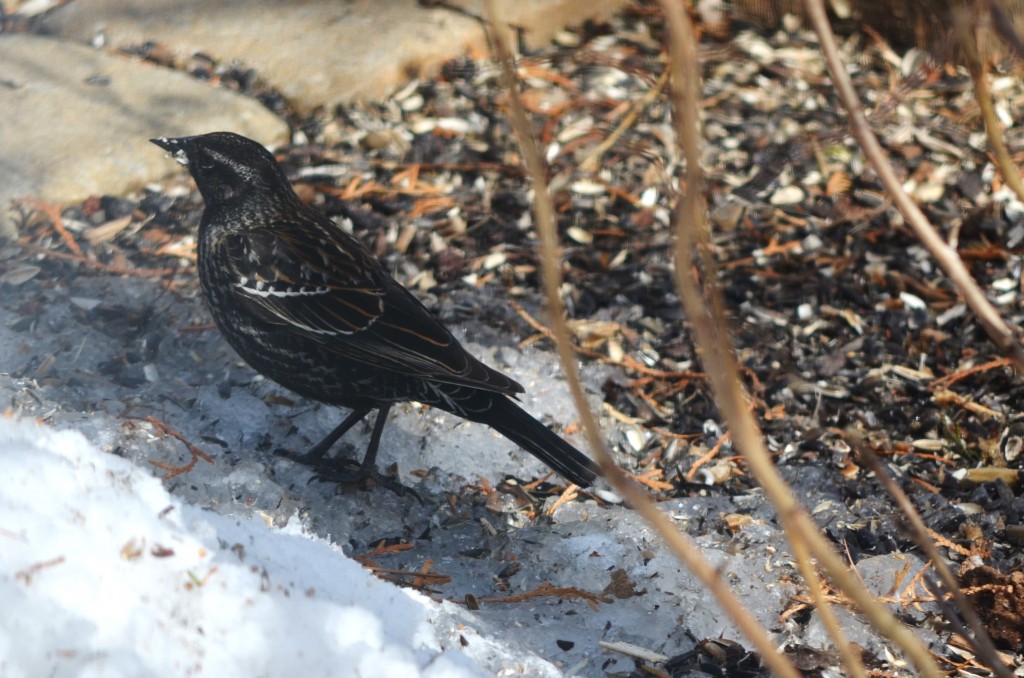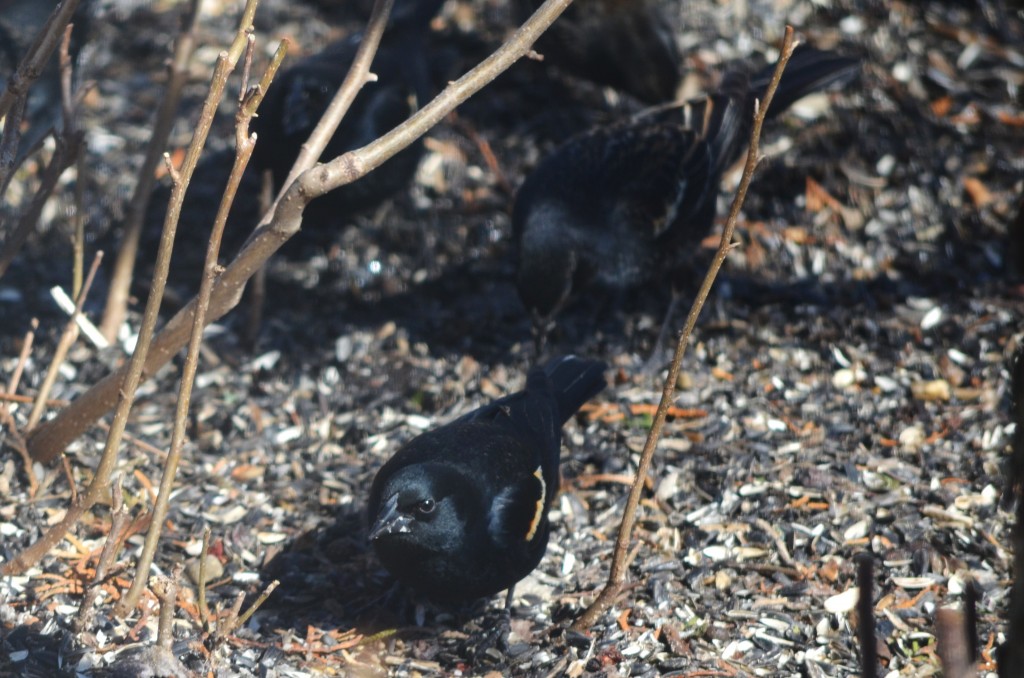Just when I was complaining about the length of this winter, the first harbinger of Spring shows up right at my door!

Every Spring, very early on, we get a visit to The Burrow from Red-winged Blackbirds. Red-Wings are usually found perched on cattails in marshes, wetlands or the wet areas along roadsides where purple loosestrife runs amok. They are migratory and are just on their way back to their northern home to breed , and I am always happy to have them stop over for a bite to eat on the way.
The flocks that arrive here in March are comprised of all males of various ages, the females follow later after the males have staked out their breeding ground. The adult males are easily recognized by the bright red “epaulets” that appear on their shoulders when in flight , at rest all you can see usually is a yellow wing bar.

The 1 year old males( like this guy above) have wing feathers edged in a buff color and yellow epaulets. After this flock finds it’s breeding ground I will only see solitary birds at the feeders occasionally.
What I, and others ,have noticed, is that when in the flock they are very easy to spook ( and thus very difficult to photograph), even noises in the house will scare them back into the white pines out back to sing and call until all is quiet here again and they will again approach the feeders. When the solitary birds arrive later on in the spring they are very comfortable with human noise and will remain close to the house even if I am acting like the paparazzi.
I have planted this garden to attract many species of birds and butterflies, but frequently wonder what it is that makes them stop by for the first time and how they know to come back? I have a large hedge of willow, which is a wetland shrub, and the Red-Wings will often build their nest in willows when they rest their destination and settle down( it defies explanation why I planted it and the other willows here and why they do so well in my dry sand). I am guessing that it looks familiar to them and although they do not nest here it is cool to have them if only for a short time.
Follow this link to hear a video of the racket they were making while they were waiting for me to disappear.
